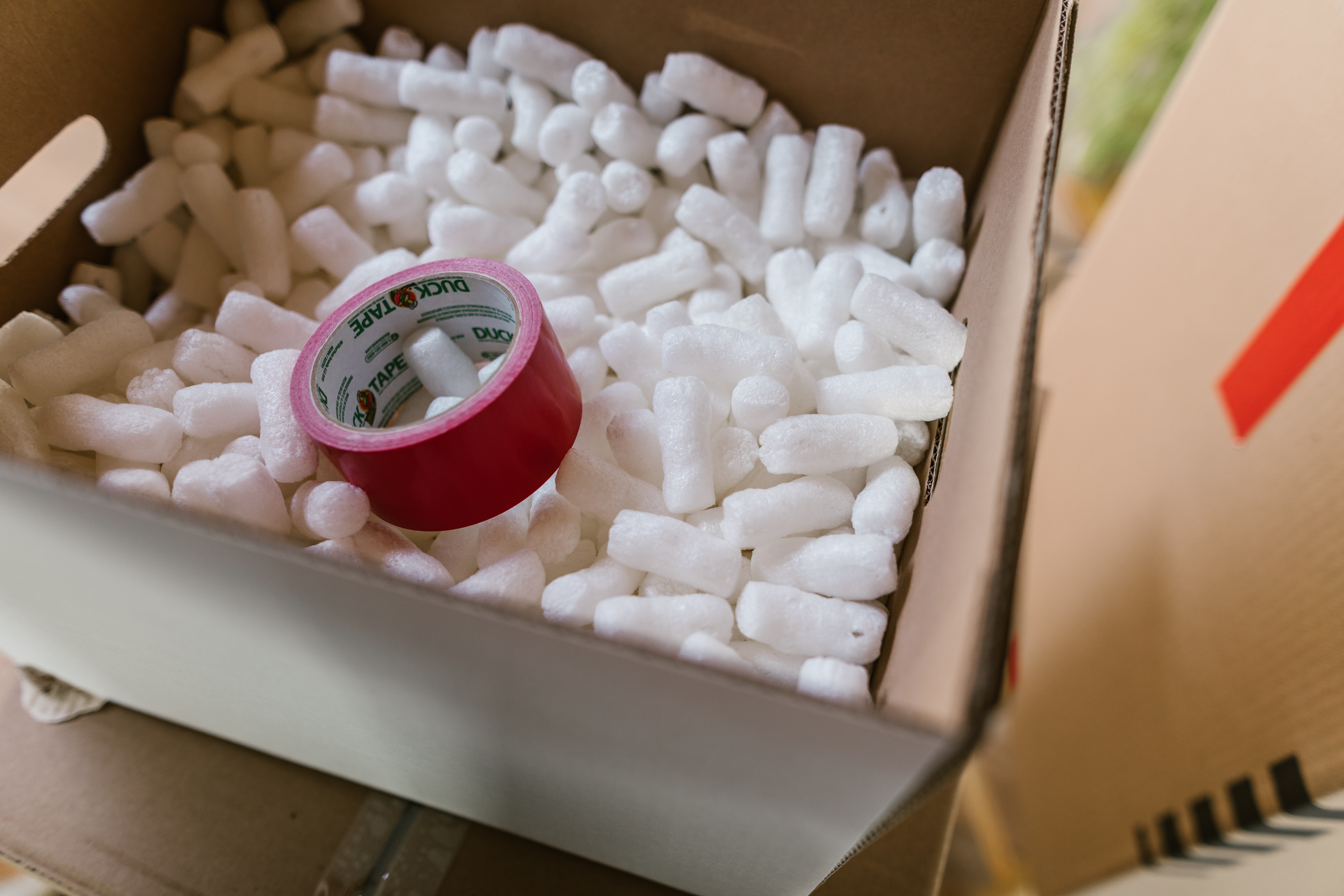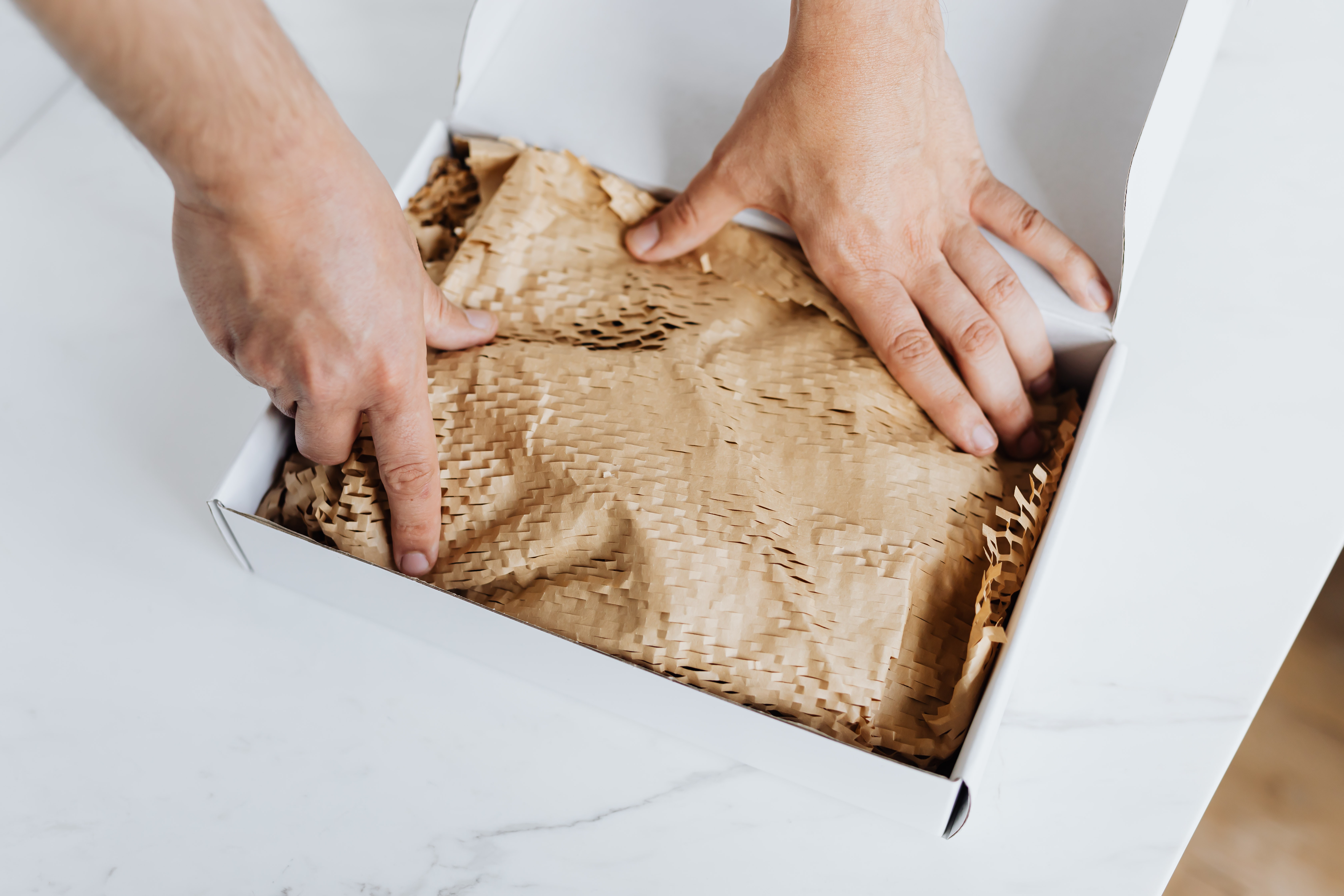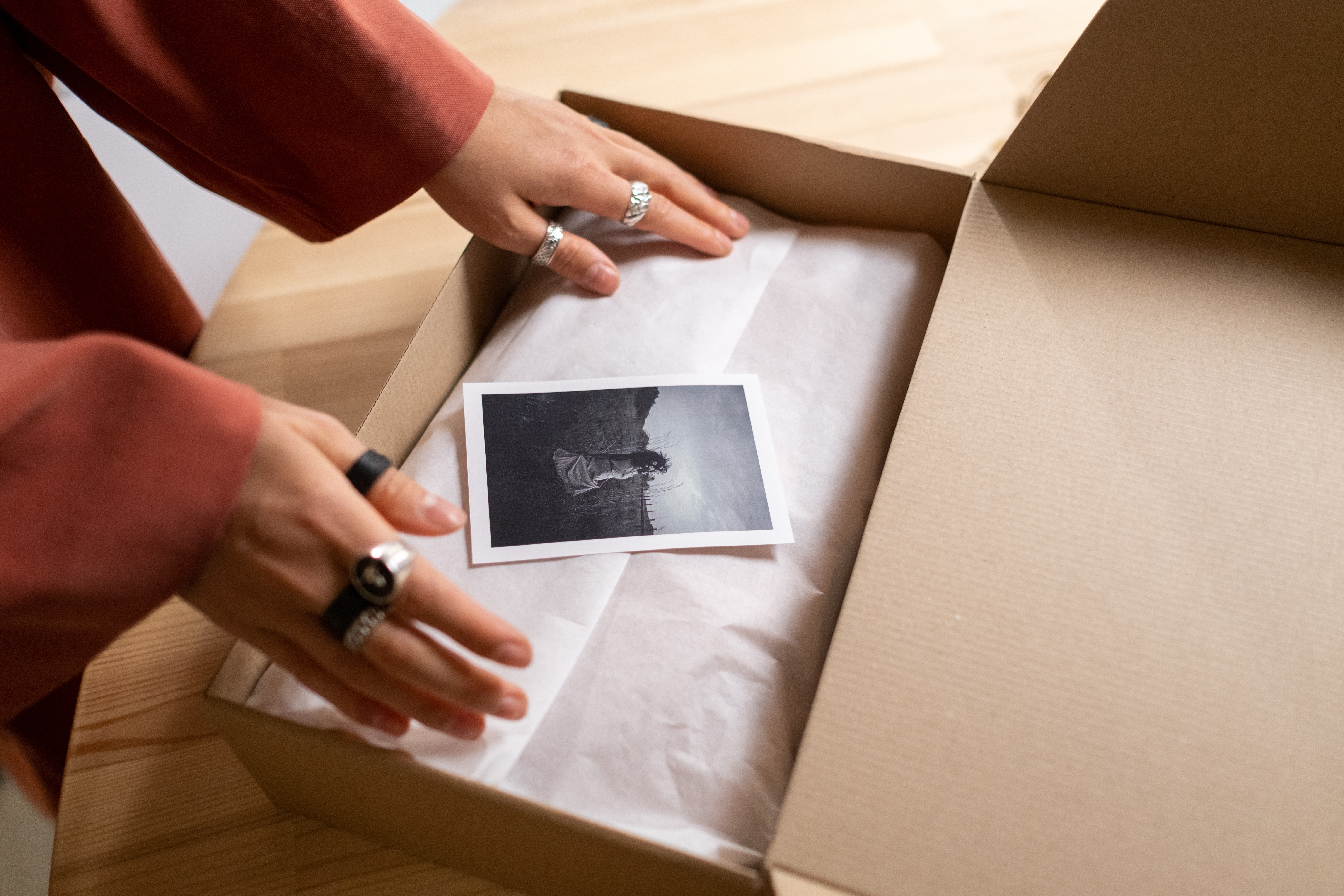Have you ever received a package that you’ve been eagerly waiting for, only to find your order broken or damaged? It's undoubtedly one of the worst feelings ever. Now imagine your customers experiencing the same thing with the products you've shipped to them.
As a seller, you want your customers to be satisfied with their orders, and one way to achieve this is by packaging fragile items properly. Though some factors may be beyond your control, you can take steps to ensure that fragile items arrive safely at their destination. Not only will this give you peace of mind, but your customers will also appreciate the extra care you've taken to ensure their orders arrive safe and sound. So, how do you pack fragile items for shipping?
To package fragile items for shipping, it is important to choose the right packing materials. Cardboard boxes, bubble wrap, bubble mailers, packing paper, packing peanuts, foam inserts, and corner protectors are effective options. Each type of fragile item requires specific packing techniques. For glassware and ceramics, individual wrapping and vertical stacking are recommended. Electronics should be packed in their original packaging if possible, while artwork and mirrors benefit from corner protectors and custom-sized covers. Lastly, ensure proper assembly and sealing of the package, and clearly label it as fragile for careful handling.
In this article, we'll walk you through some tried-and-true tips for packaging fragile items, so you can ship with confidence. Let's dive in!
1. Choosing the Right Packing Materials
When it comes to packaging fragile items, the materials you use play a huge role in keeping your products safe during their journey. Let’s go over some of the most effective packing materials that you can use to keep your fragile items secure and protected.
Cardboard Boxes
Cardboard boxes make a fantastic choice for packing fragile items, thanks to their sturdiness, adaptability, cushioning capabilities, and easy-to-seal nature. Made from thick and robust material, these boxes can handle the rough treatment that sometimes occurs during shipping, offering a solid outer layer of protection for your precious items.
To enhance their protective powers, cardboard boxes can be lined with cushioning materials like bubble wrap, foam peanuts, or corrugated cardboard inserts. This extra layer helps absorb any shocks or impacts that might happen en route to their destination.
In addition, cardboard boxes are available in a wide range of sizes, so they can be tailored to fit the specific item you're shipping. This ensures your fragile item stays put and minimizes the risk of damage. And to top it all off, sealing your cardboard box with high-quality tape will keep everything inside safe and secure.
Bubble Wrap
What makes bubble wrap a great choice for safeguarding fragile items is the bubbles that create a protective layer around your item. This effectively absorbs shocks and vibrations during shipping. Its flexible nature allows it to conform to various shapes, providing a snug fit that keeps your item from moving around inside the box, reducing the risk of damage in transit.
Additionally, bubble wrap is lightweight, which contributes to lower shipping costs and easier package handling. Its user-friendly design means it can be easily cut to size with scissors or a knife. As a versatile material, bubble wrap suits the protection needs of a wide array of delicate items, from glassware and electronics to artwork.
Bubble Mailers
Bubble mailers are an all-in-one solution that offers cushioning, durability, and secure closure to keep your fragile items safe during shipping. The bubbles inside the mailer act as a cushion and provide a layer of protection around the item. They are also made of strong and durable materials, such as paper or plastic, which can withstand rough handling and protect the item inside from external forces.
Bubble mailers typically have a self-sealing adhesive strip that provides a secure closure. This helps to prevent the item from slipping or falling out during transit.
At Impack, we take packaging to the next level by offering biodegradable bubble mailers with beautiful designs, so you can protect your fragile items while also making a positive impact on the environment. Made from 100% recyclable materials, they can easily be reused or recycled. In addition, if they happen to end up in nature, they will naturally break down into harmless substances, such as carbon dioxide, water, and biomass, leaving no negative impact on the environment.
Packing Paper
Another great option for packaging fragile items is packing paper. Not only does it provide a soft cushion to absorb shocks and vibrations during transit, but it's also versatile, sustainable, and cost-effective. It's easy to customize the amount of protection your item needs by using more or less packing paper. Plus, you can fold, wrap, or scrunch it to fit any shape or size.
Packing paper is also biodegradable and recyclable. When you choose packing paper, you're not only protecting your items but also doing your part to help our planet. It is also usually more affordable than bubble wrap, which means you can protect your fragile items without breaking the bank.
Packing Peanuts
Packing peanuts might look like tiny, fun little clouds, but they're actually a powerful ally when it comes to protecting your fragile items. They can create a cushioning barrier around your fragile items and effectively absorb shocks and impacts during shipping. Their unique shape allows them to interlock and prevent your items from shifting inside the box.
One of the best things about packing peanuts is their feather-light weight. They won't add much to the overall package weight, which can help you save on shipping costs. They are also perfect for filling empty spaces within your packaging, which ensures that your fragile items stay put and don't bump into each other or the box walls during transit.
While traditional packing peanuts are made from non-biodegradable materials, nowadays, there are eco-friendly alternatives available. If you want to keep your packaging green, look for biodegradable packing peanuts made from cornstarch or other plant-based materials.
Foam Inserts and Corner Protectors
Foam inserts can be cut and shaped to perfectly match the dimensions of your product, providing a secure, snug fit that prevents movement during shipping. As the foam material absorbs impacts and vibrations, it ensures that your fragile items remain well-cushioned throughout transit. Foam inserts also give your packaging a clean, professional look, adding value and enhancing your brand's image.
On the other hand, corner protectors are specifically designed to shield the most vulnerable parts of your items – the corners! By reinforcing these areas, you significantly reduce the risk of damage during shipping.
Corner protectors come in various sizes and materials, such as foam or cardboard, which makes them suitable for different types of fragile items like picture frames, mirrors, and electronics. They are also easy to install. Just slide them onto the corners of your item, and you're all set!
Tip: Reuse Old Packaging When Possible!
Used paper packaging, cut-up old ripped boxes, and shredded paper can be used as extra cushioning for fragile items. You can also get creative with how you use them, such as cutting up old boxes to make dividers or using shredded paper as decorative fillers. Just make sure the reused packaging is clean and in good condition to effectively protect your fragile items during shipping.
2. Packing Techniques for Different Fragile Items
In addition to the right packing materials, choosing the right packaging technique can make all the difference in ensuring your fragile items arrive safely. Different types of fragile items require specific packing techniques to protect them during transit. Here are some of them:
Glassware and Ceramics
- Wrap each item individually. If you’re using bubble wrap, the bubbles should face inward for maximum cushioning.
- For items like cups or vases, stuff the inside with crumpled packing paper or small bubble wrap pieces to reinforce their structure and prevent breakage from within.
- When packing plates, use a vertical stacking method. Place a layer of packing paper or bubble wrap between each plate, and then stack them vertically (like vinyl records) in a sturdy box. This distribution of weight reduces pressure on individual items.
- Consider using the box-in-box method for extra protection. Place the wrapped item in a smaller box, and then put that box inside a larger one with packing peanuts, crumpled paper, or other cushioning material in between.
Electronics
- If possible, use the original packaging of the electronic item, as it's specifically designed to protect the product during shipping.
- Wrap loose cables and accessories individually and place them in a separate bag or box to prevent them from scratching or damaging the main item.
- Remove any batteries from your electronics to avoid potential leaks and damage during transit.
- Use foam inserts or corner protectors to provide additional support and protection for larger or oddly-shaped electronics like TVs, monitors, or gaming consoles.
- For sensitive electronic components, use anti-static bubble wrap or bags to prevent damage caused by static electricity. This is especially important for items like computer parts and circuit boards.
Artwork and Mirrors
- Use foam or cardboard corner protectors to shield the vulnerable corners of your item from impacts or pressure.
- Choose a box that's slightly larger than your wrapped item to allow room for cushioning materials.
- For large mirrors or artworks, consider creating a custom-sized plywood or hardboard cover to place over the front of the item for added protection against punctures or pressure.
- When shipping multiple items in one container, always place the heaviest or sturdiest pieces at the bottom and stack lighter or more delicate items on top. This helps distribute weight more evenly and prevents damage due to compression.
- Position the wrapped artwork or mirror in the center of the shipping container to minimize direct contact with the container's edges. This reduces the risk of damage from external impacts.
- For framed artwork or mirrors, it is preferable to place them vertically inside the box, similar to how books are placed on a shelf. This orientation distributes pressure more evenly and helps prevent damage caused by stacking.
3. Assembling and Sealing the Package
Assembling and sealing your package properly is crucial to ensure the safe delivery of your fragile items. A poorly sealed package may result in items falling out or becoming damaged during transit, while a well-sealed package will provide better protection against outside elements, such as moisture or dust. Here’s how to properly assemble and seal your package for optimal protection.
Step 1: Layer the box for maximum protection.
To set the stage for a secure shipping experience, thoroughly layering and cushioning your box is important. Start by reinforcing the box with heavy-duty tape and creating a cushioned base using materials like bubble wrap or crumpled packing paper.
Next, carefully position your wrapped items inside following proper guidelines (center placement, vertical orientation, etc.). If shipping multiple pieces, separate them with layers of cushioning material to avoid scratches or damage.
Step 2: Fill gaps with packing material.
Filling gaps within your shipping box helps prevent movement and provides extra protection for your fragile items. Some suitable gap-filling materials are bubble wrap, foam peanuts, or crumpled packing paper.
When filling empty spaces with your chosen packing material, ensure a snug fit that prevents items from shifting or colliding with one another. Also, be careful not to overstuff the box, as this can cause undue pressure on your fragile items and potentially lead to damage.
Step 3: Properly seal the package.
When reinforcing with packing tape, use high-quality packing tape with sufficient strength and adhesion, preferably at least 2 inches wide, to seal your box. For added protection, apply extra tape to the corners and edges of the box, which are more vulnerable to damage during shipping.
Step 4: Label the package.
For accurate and clear labeling, clearly write the recipient's full name, address, and any relevant contact details, such as a phone number or email address, on the package. Don't forget to include your own return address in case the package needs to be sent back to you.
Also, clearly indicate that the package contains fragile items by writing "Fragile" or "Handle with Care" on all sides of the box. You may also use pre-printed fragile stickers or labels for this purpose. If necessary, use arrows or labels stating "This Side Up" to indicate the correct orientation for handling and transport.
Learn more about Shipping & Packaging here
Wrapping Up
Packaging fragile items for shipping requires careful planning, appropriate packing materials and techniques, and attention to detail. When you prioritize the safety of your items during transit, you can help save yourself from the headache of returns, complaints, or negative reviews. Following the tips we provided in this article can help you increase the chances of your items arriving safely at their destination and ensure customer satisfaction.
Now, it's time to put your knowledge into practice. Whether you use cardboard boxes, bubble wrap, packing paper, or a combination of them, remember to always test the package's sturdiness and reinforce weak spots. And don't forget to label the package as fragile, so that the carriers know to handle it with care. Ready, set, pack!










